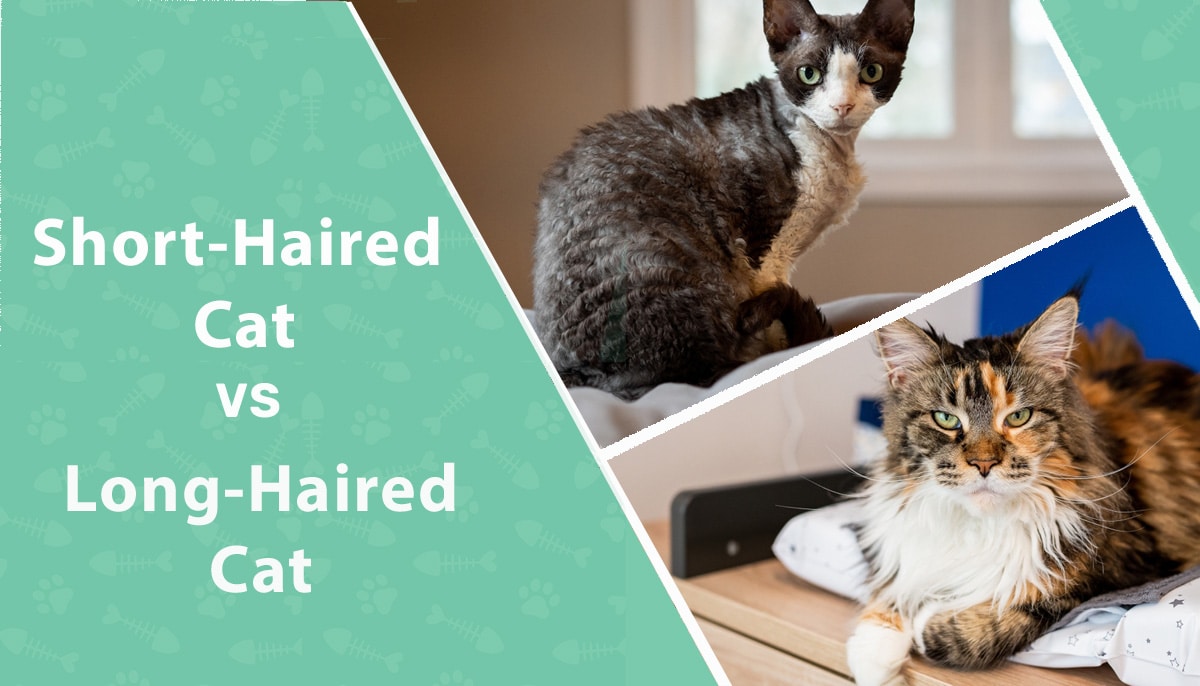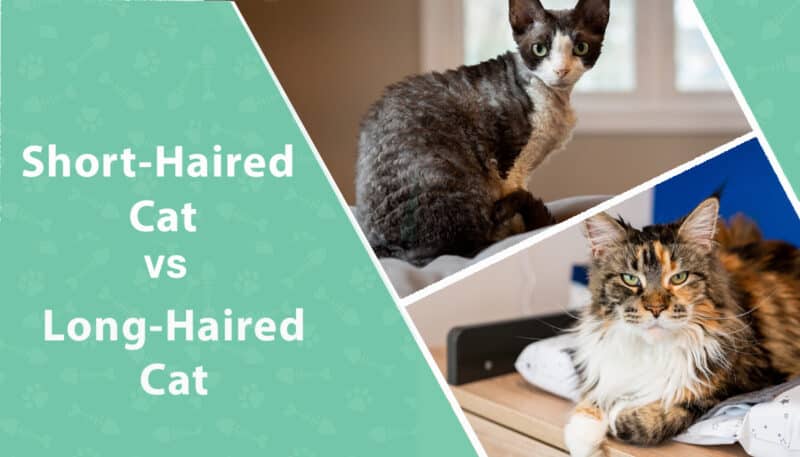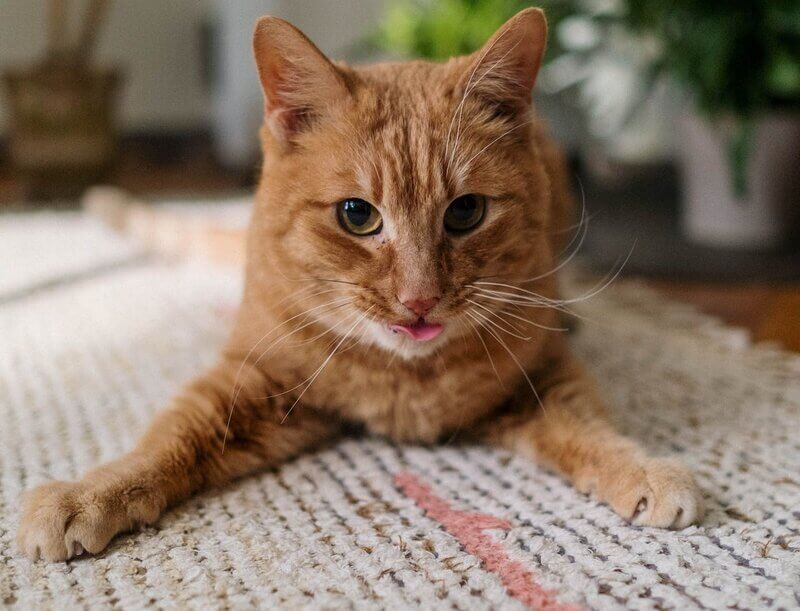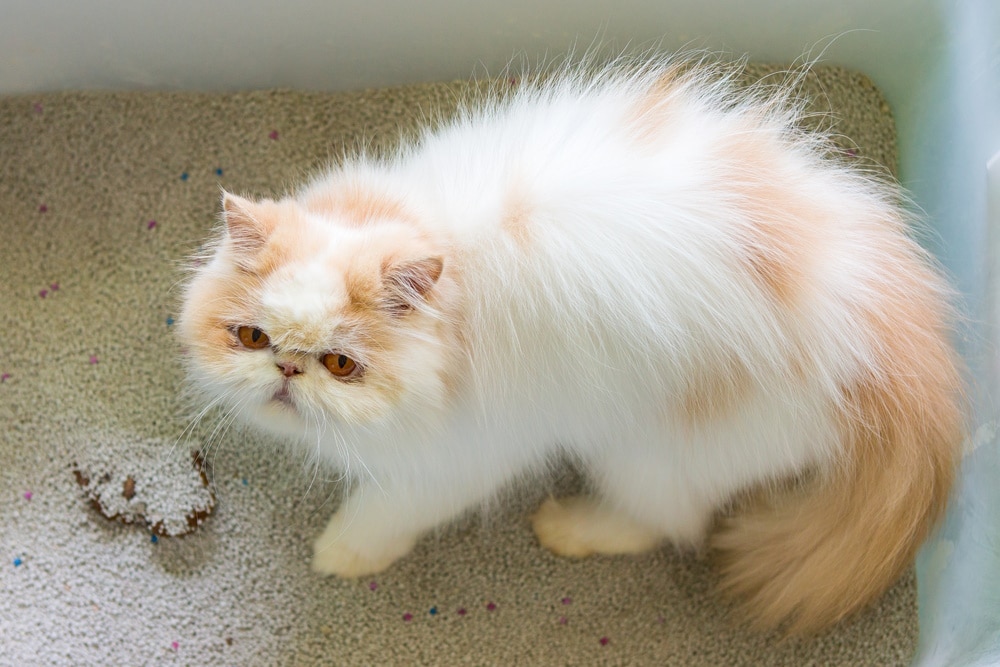Click to Skip Ahead
If you’re considering adding a cat to your family but are unsure whether to go with a short- or a long-haired cat, you’ve come to the right place. Before pulling the trigger, it’s wise to weigh both types’ pros and cons to determine which suits you and your family. Sometimes, the decision comes down to personal preference, or there may be allergies to consider. Whatever the case, we examine both in detail here to help you make the best decision possible.
Visual Differences
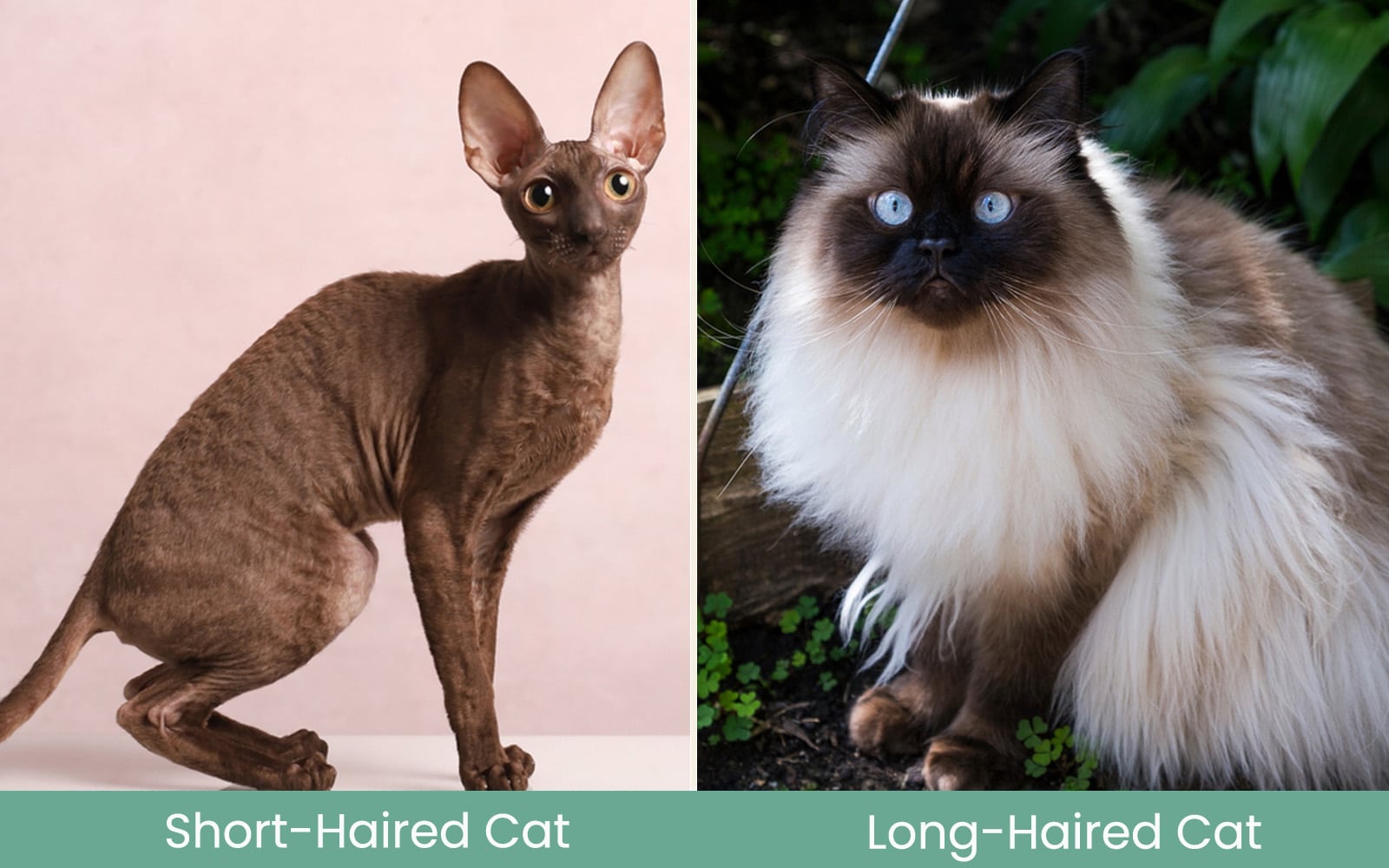
At a Glance
- Requires less grooming
- Better suited for allergy sufferers
- Tend to have playful personalities
- Curious, vocal, social
- Potentially sheds more
- May trigger allergy symptoms more easily
- Soft and fluffy coats, perfect for snuggling
- Tend to have relaxed temperaments
Overview of Short-Haired Cats
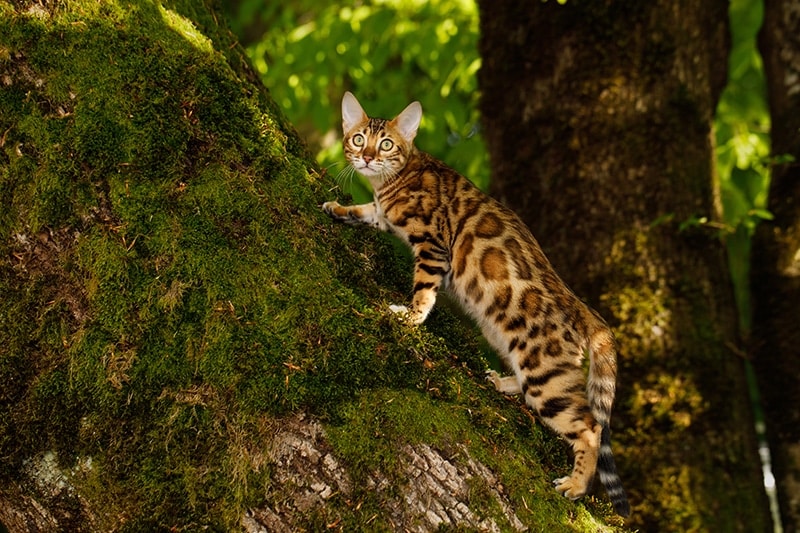
Short-haired cats do not require daily grooming and do not have the problem of hair mats and tangles. Typically, short-haired cats do not shed that much, but this isn’t always true, as it depends on genetics and breed. Still, they do not need regular brushing (once a week should suffice), and you’re less likely to see long, flowing, loose hair in your home. Simply put, short-haired cats have sleek, short coats that are much easier to maintain and are more suitable for allergy sufferers.
What Are Common Types of Short-Haired Cats?
There are a few common breeds of short-haired cats: the American Shorthair, the British Shorthair, the Oriental Shorthair, the Exotic Shorthair, and the Domestic Shorthair, to name a few. So, what are the differences?
In simplistic terms, the Domestic Shorthair is a mix of various breeds. The American Shorthair is native to the United States and was formerly known as the Domestic Shorthair. The name was changed in 1966 to differentiate the breed from other short-haired cat breeds, and it’s believed these cats were the first to step paw on U.S. soil.
As for the British Shorthair, the Oriental Shorthair, the Exotic Shorthair, and other short-haired breeds, they are all similar in terms of having short coats, and the maintenance is relatively the same.
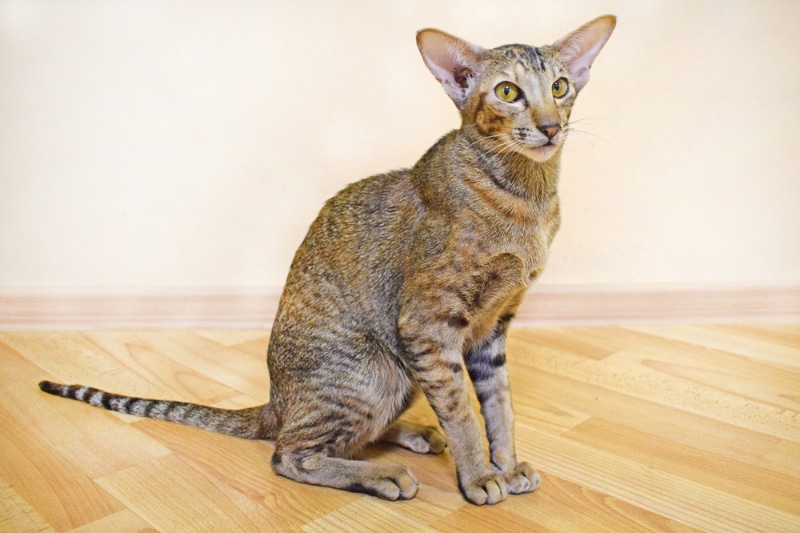
Characteristics & Personality of the American Shorthair
Given there are a few types of short-haired cats, we’ll focus on the American Shorthair and the Domestic Shorthair in comparison. The American Shorthair is purebred and a popular breed to own in the United States. American Shorthairs tend to have short and sturdy bodies with muscular builds. They have short, dense coats with long, flowing tails and short legs. They are known for having endurance, strength, and balance, even though they are not considered agile. They come in many different patterns and colors but are famously known for their grey and brown tabby coats. They can also have solid colors, bi-colored, tri-colored, striped, or shaded looks.
These cats are affectionate and intelligent and love to snuggle with their owners. They are also content watching birds and other wildlife go to and fro from a window. The American Shorthair does have an independent streak and will engage in play, but only if it suits their needs at the time.
Characteristics & Personality of the Domestic Shorthair
Domestic Shorthairs come in various sizes, colors, and statures with muscular, medium-sized builds. They have round heads, paws, and faces, and the coats are short and sleek. Given these cats are “mutts,” they vary in colors, markings, and personalities.
Since the personalities vary, you never know what kind of cat you’ll end up with in terms of behaviors. For example, the vast possibilities are calm, docile, affectionate, vocal, quiet, playful, or social. They have superb balance and hunting skills, and they typically display a playful personality above all else. They have tons of energy and require outlets for their hunting skills, such as cardboard boxes, toys, cat tunnels, a cat tree, and scratching posts, for example.
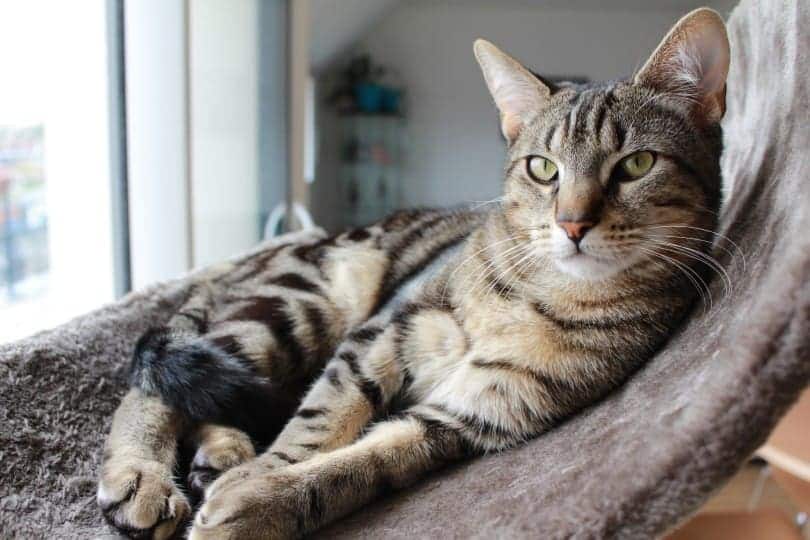
What Are Common Short-Haired Cat Breeds?
To give you a glimpse of short-haired cat breeds, here are common ones to consider:
- Coats are low maintenance
- May shed less
- Better suited for allergy sufferers
- Many types of behavior possibilities
- Some breeds may have an independent streak
Overview of Long-Haired Cats
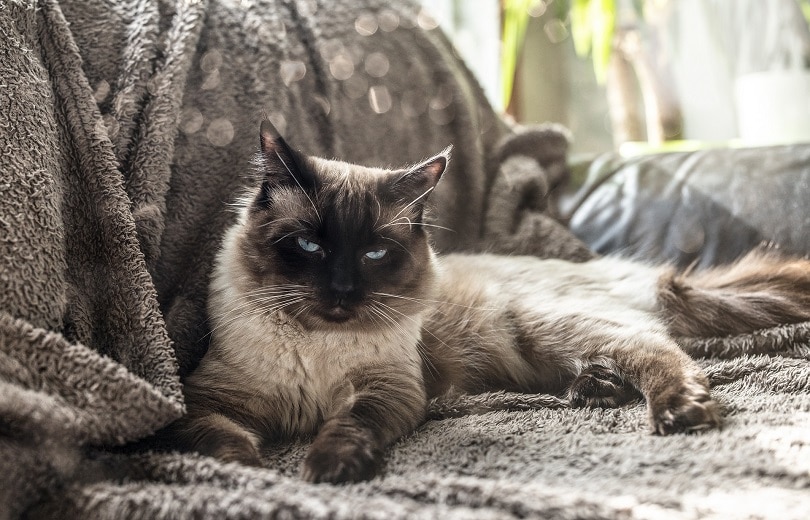
A significant factor that separates short-haired cats from long-haired cats is the coat. Long-haired cats have long, soft, and fluffy coats, but if you decide on one of these fluffy felines, be prepared to invest in a quality grooming brush.
Ideally, these cats require good grooming at least four to five times per week to keep mats and tangles down. Another factor to consider is when the hair gets too long, it requires trimming by a veterinarian or professional groomer (you can do this yourself, but ensure you learn the proper technique for the task). The reason for this is when the hair gets too long around the rear, waste can collect in the coat.
There is much debate on whether short-haired cats shed less than long-haired cats, but in actuality, both types shed regardless. However, when long-haired cats groom themselves, they simply have much more hair, which can cause the spread of more dander, a common allergen found in a cat’s saliva. When long-haired cats groom, they tend to spread more dander because of the vast amount of hair.
When owing a long-haired cat, you’ll also want to keep lint rollers handy to get the long cat hair off clothing, bedding, and furniture. However, if you want to snuggle with a fur baby with soft and luxurious fur, a long-haired cat is for you.
What Are the Common Types of Long-Haired Cats?
Like short-haired cats, there are certain types of long-haired cats. For example, you have the Domestic Longhair, the American Longhair, and the British Longhair, to name a few. The only difference is that the Domestic Longhair is not purebred, whereas the American Longhair and the British Longhair are pedigree.
The Domestic Longhair’s lineage cannot be traced, and these cats are not recognized by the Cats Fanciers’ Association (CFA) given their hybrid status. The CFA also does not recognize the American Longhair or the British Longhair; however, they are both recognized by The International Cat Association.
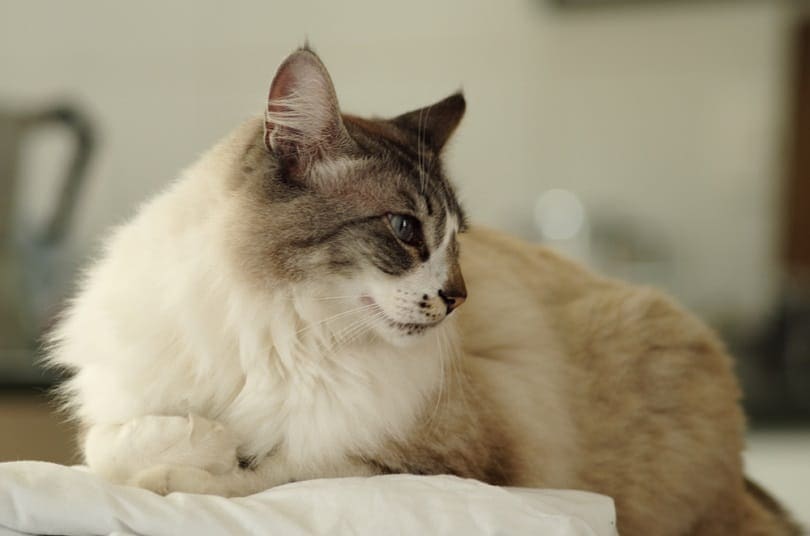
Characteristics & Personality of the Domestic Longhair
Regarding the Domestic Longhair, the temperament will vary due to the mix and match of their ancestry. There is no way to know for sure what type of temperament you’ll get with “mutts,” but nearly all long-haired cats have desirable temperaments.
So, what are the differences in temperament between the American Longhair and the British Longhair? The American Longhair is playful, loving, and moderately active. Some owners of the breed describe them as “doglike,” greeting you at the door when you arrive home. They also fancy a game of fetch and have superb hunting skills.
Characteristics & Personality of the British Longhair
The British Longhair is calm relaxed, and reserved but also playful. However, they form strong bonds with their owners and do well with children. One of the most popular breeds, the British Longhair, is similar to their British Shorthair counterparts in terms of temperament, and they make excellent companions, given their social nature and desire to play.
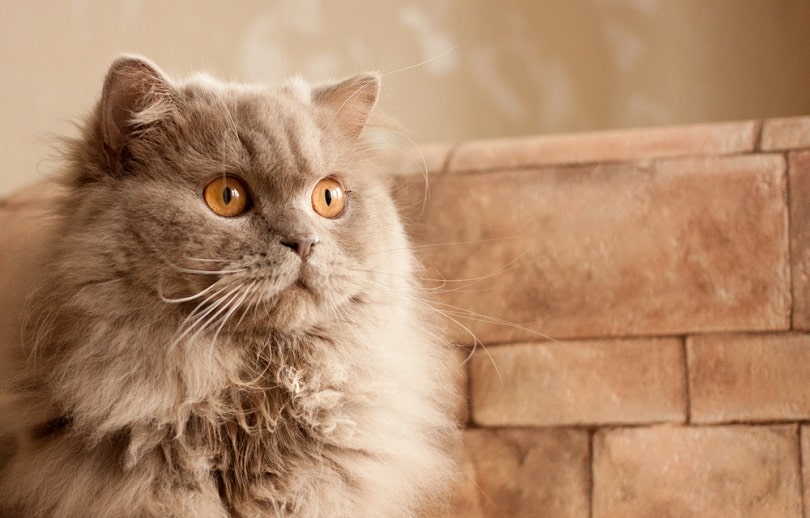
What Are Common Long-Haired Cat Breeds?
There are quite a few wonderful long-haired cat breeds to consider if you desire long, fluffy, and soft coats. Let’s have a look.
- Long, soft, fluffy coats
- Have excellent temperaments
- Coat requires extensive maintenance
- Coats need trimming to prevent waste from sticking to the coat
- May spread more dander
- May shed more than short-haired cats
Other Factors to Consider
Choosing between a short-haired or long-haired cat can be as easy as deciding if you want a cat with a low-maintenance coat or a cat that requires extensive grooming. However, other factors to consider involve the type of temperament you desire in a feline and if anyone in the home suffers from allergies.
As we mentioned, the Domestic Shorthair and the Domestic Longhair are not breeds of their own, but rather “mutts,” leaving you to guess how their behaviors will be. Before choosing a particular breed, do your research to learn the possible temperaments, as this can help greatly in making a decision.
As for allergies, the general consensus is that long-haired cats shed more, meaning more hair and possibly triggering allergy symptoms. If this is the case for you, you might want to consider a short-haired cat.
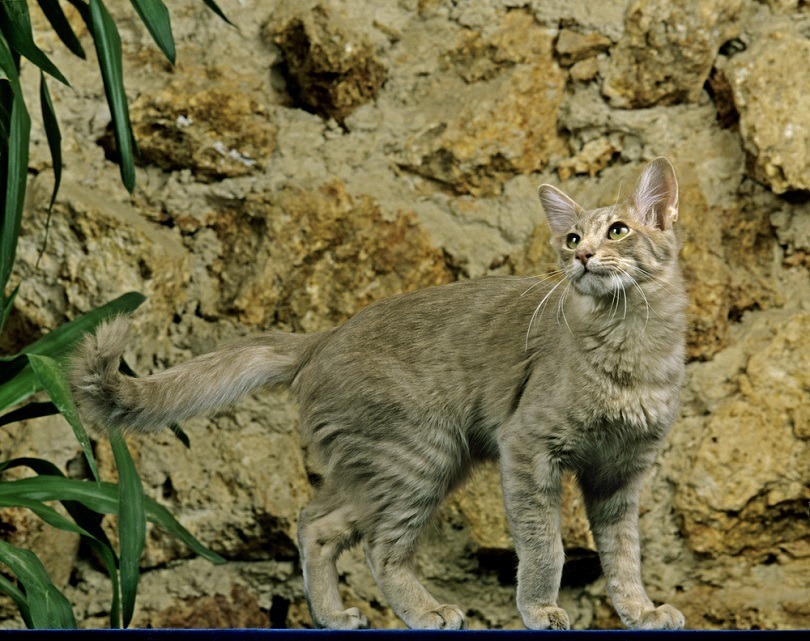
Do Long-Haired Cats Get Hotter Than Short-Haired Cats?
This is an excellent question because it could help you decide based on your location. The consensus is that long-haired cats’ long fur can trap heat, which can lead to overheating. If you live in a warm climate, a short-haired cat may fare better; however, if your cat is living strictly indoors in air conditioning, this shouldn’t be a huge factor.
Can You Spot Flea-and-Tick Infestations in Long-Haired Cats?
Unfortunately, it is harder to spot fleas and ticks embedded in a long coat, and it may prove challenging to spot with a long-haired cat. However, keeping your cat on flea-and-tick preventatives will help significantly with this issue, leaving your long-haired cat flea and tick free.
Are Short-Haired Cats More Energetic?
Not necessarily. The energy level of any cat depends more on genetics, age, and breed rather than the coat type. The first and most significant factor you should consider is the type of coat the cat has and if you’re willing to share your home with that coat.
Whichever you decide, you can then search for particular cat breeds in either the short-haired or long-haired category with the type of temperament you’re searching for. For example, do you want an energetic, short-haired cat? If so, consider the American Shorthair. If you desire a laidback and affectionate cat with long hair, consider the Maine Coon.
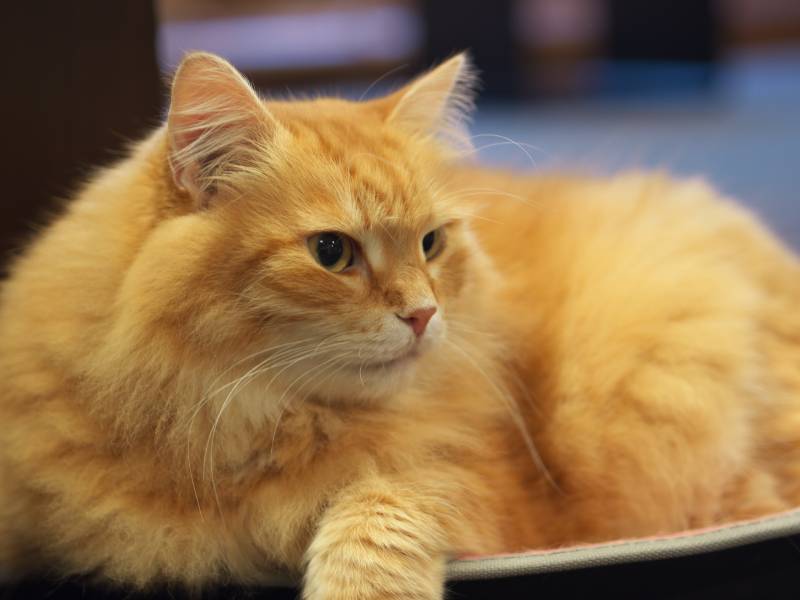
Conclusion
The most significant decision you face when choosing between a short or long-haired cat is simply the coat. As we’ve learned, long-haired cats require much more coat maintenance than short-haired cats, but the temperament will depend on other factors, such as age, breed, and genetics. If you’re an allergy sufferer, you may want to consider a short-haired cat because they tend to shed less.
See also:
- Does a Sphynx Need Sunscreen? 8 Summer Safety Tips
- Why Do Cats Like Treats So Much? Vet-Reviewed Reasons
Featured Image Credit: Left:(Devon Rex cat) Heather Raithby Doyle, Shutterstock; Right(Main Coon) Garcia Celine, Shutterstock

